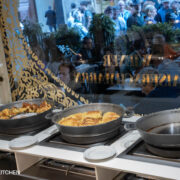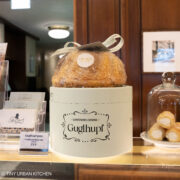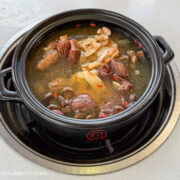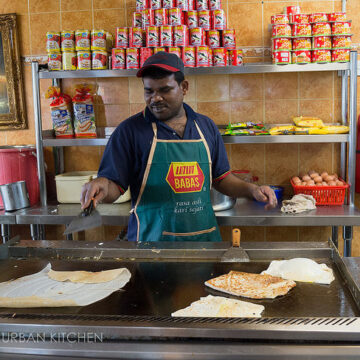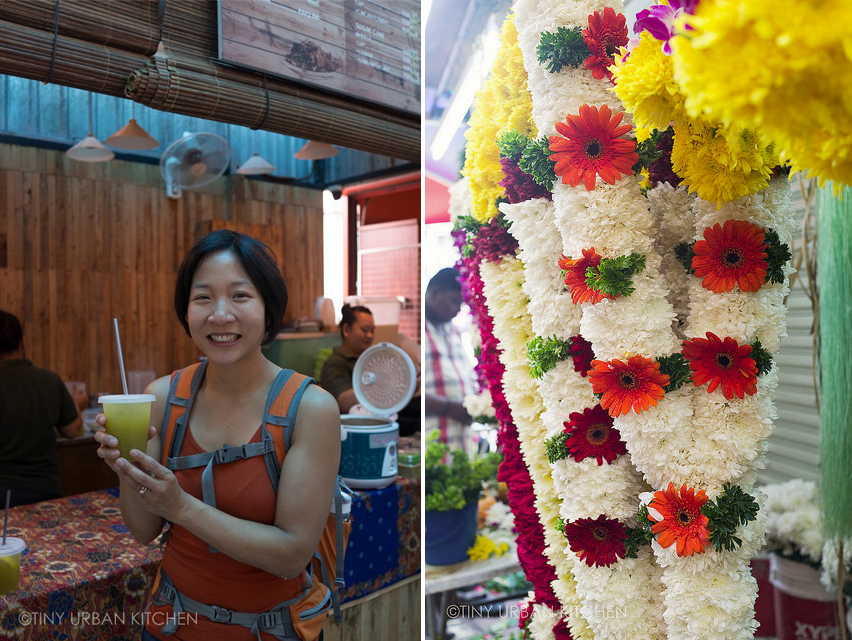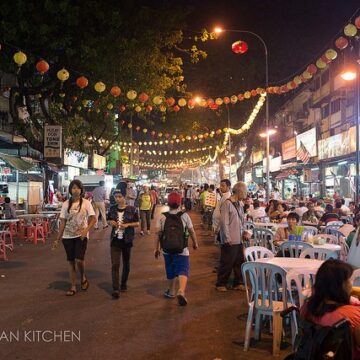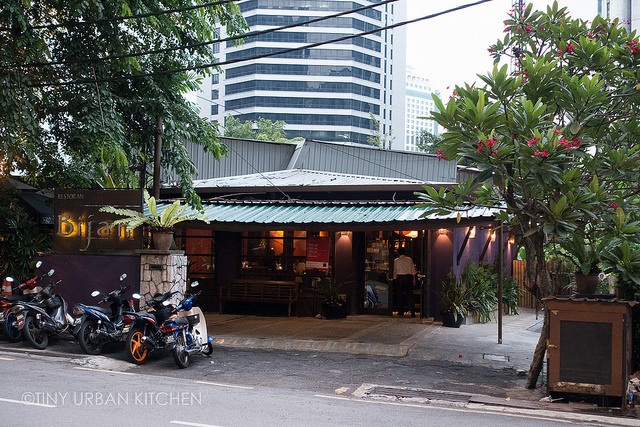
This is the seventh post in the Malaysia and Singapore! series. Other posts in this series include Lot 10 Hutong - Kuala Lumpur's Most Famous Hawker Stalls Under One Roof, LaZat Malaysian Home Cooking, Otak, Otak Fish Dumplings in Banana Leaf, Little Penang Cafe + Visiting the Petronas Twin Towers, Roti Jala - Malaysian Lacy Pancake, and Nonya Malaysian Chicken Curry.There's no doubt that Malaysia (or southeast Asia for that matter) is known for its street foods. Much of Malaysia's rich and colorful cuisine comes from the melding of flavors from neighboring countries with a strong street food culture: India, Thailand, China, and Indonesia.
Naturally, as a food-oriented traveler, I was most interested in checking out all the streetside noodle shacks, open air restaurants, and mom-and-pop stalls. Similarly, I was highly suspicious of high-end, beautifully decorated restaurants that seemed to cater to Westerners.
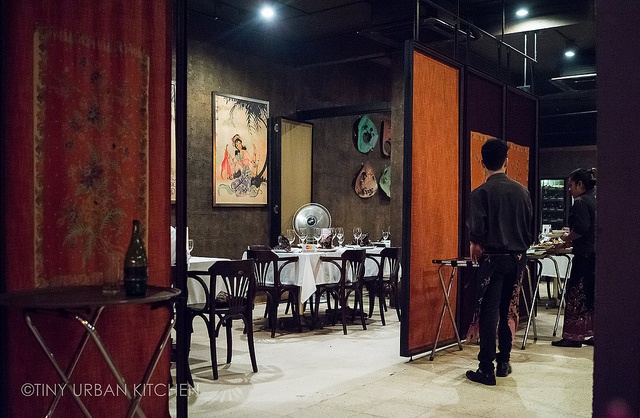
After our first full day in Kuala Lumpur, Bryan said he really preferred a sit-down place for dinner. (I bet he was afraid I would arrange only hawker stall dinners for us all week long!) We stopped by the hotel concierge and asked for a recommendation.
Without missing a beat, the concierge immediately recommended Bijan and asked whether we wanted him to make a reservation. Although I was a bit hesitant (I hate making rash decisions without doing any research), we said yes, thinking we could always cancel later if needed.
It ended up not being necessary. We ended up enjoying Bijan so much that we actually went back for a second visit on the last day of our trip.
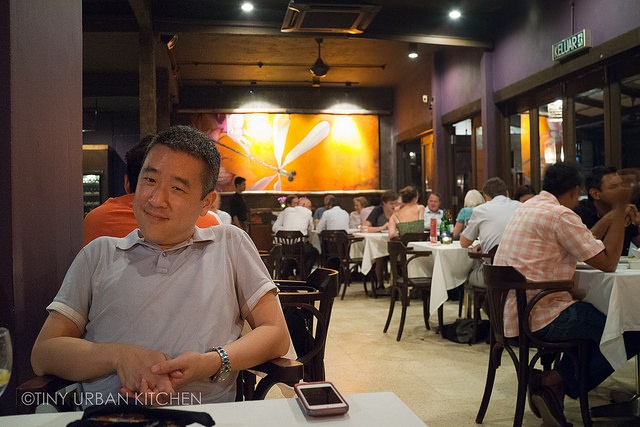
Bijan has been named the "Best Malay Restaurant" by Tourism Malaysia and "best Malay food" by Timout KL. It is very well known for serving excellent Malaysian food. They say they serve Malaysian food "with a modern twist".
It's not super high end, but it's definitely a nice and classy restaurant. The ambiance is cozy, rustic, and romantic. There's a lovely outdoor terrace where you can dine under the stars (which is surprisingly comfortable once the sun goes down). Conveniently located, Bijan is located just an 8 minute walk from the center of the lively shopping district Bukit Bintang, tucked in an area that's a little off the beaten path.
The prices for such a nice restaurant are surprisingly reasonable, probably due to the strength of the U.S. dollar. Most appetizers were in the $3-$4 range and entrees in the $7-$10 range.
Below I've summarized the dishes we ordered from two separate visits (lest you think we eat a ton in one sitting!).
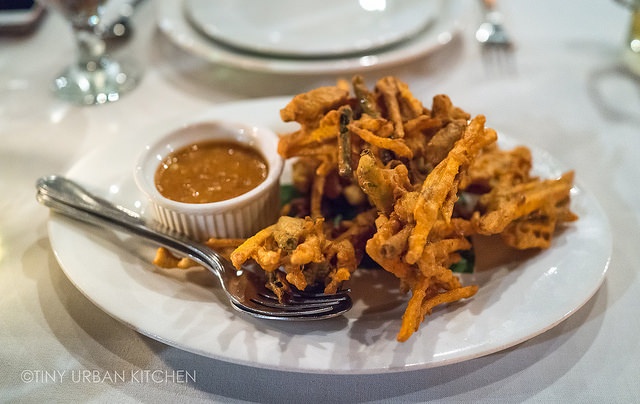
Cucur Bijan (RM12 or $4 USD) is a classic Malaysian appetizer that consists of crisp fried vegetable "fries" of tofu, sweet potato and tempeh matchsticks together with bean sprouts and spring onions. These are all served with Bijan's homemade peanut and chili dipping sauce.Being a deep fried dish, it was pretty heavy, though satifying. The peanut and chili dipping sauce was flavorful and went well with the "fries." It reminded me of tempura, a bit, but with a heavier and more flavorful batter.
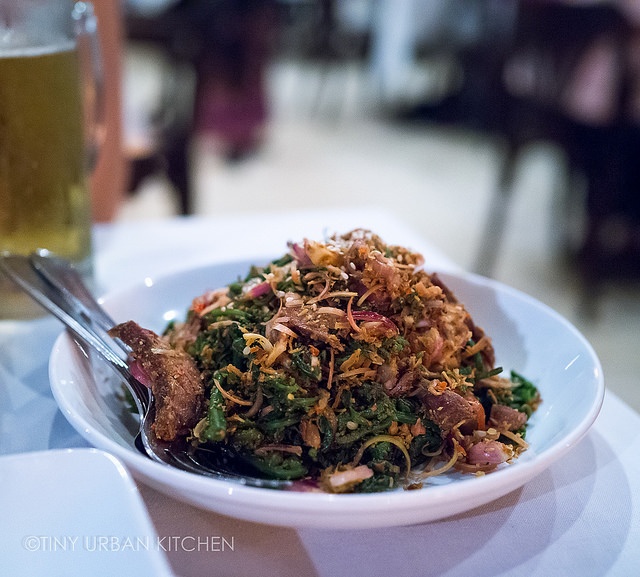
Kerabu Pucuk Paku Daging Salai (RM22 or $7 USD) is a wild fern salad tossed with char grilled beef slices in a dressing of lime, torch ginger, and crispy shallots. The wild ferns are very local and are typically harvested from the nearby mountains and rainforest regions (for photos of the wild ferns at the market, see photos from my outdoor market trip in Malaysia).
I loved this salad. The flavors were bright and floral, and I loved the textural differences from the wild greens, crispy shallots, and marinated beef. Additionally, it just felt healthy and I felt good after eating it. All in all, it was probably my favorite dish.
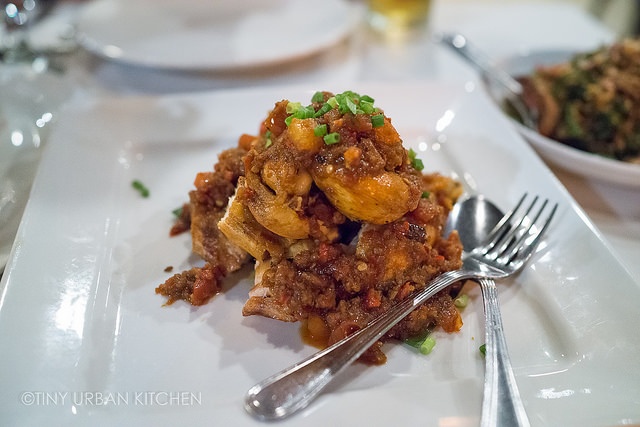
Because Bryan can't have coconut milk (which is quite limiting in Southeast Asia, to say the least!), we focused on dishes that used other types of sauces. Ayam Ketumbar Sambal Tomato (RM30 or $10 USD) consists of crispy fried chicken pieces served with a spicy tomato sambal.
Sambal is a spicy sauce typically made from grinding together chili peppers, aromatics (e.g., garlic, shallots, ginger, scallions), an acid (lime juice or vinegar), and an umami component (e.g., fish sauce or fermented shrimp paste). This version was made with tomatoes and had a lovely sweet but deeply flavored umami that was delicious with the chicken.
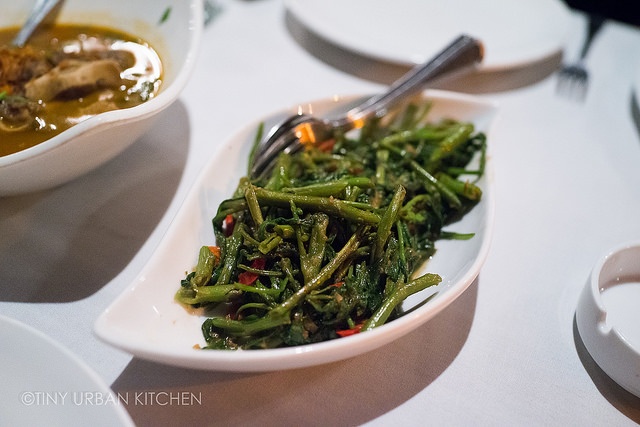
Water spinach (or hollow heart vegetable) is very common in Malaysia. A classic Malaysian dish is Kangkung Goreng Belacan (RM15 or $5 USD), water spinach stir fried with dried shrimp and belacan, a fermented shrimp paste that is commonly used in Malaysian cuisine.
We generally like this dish a lot and order it often. This version was solid.
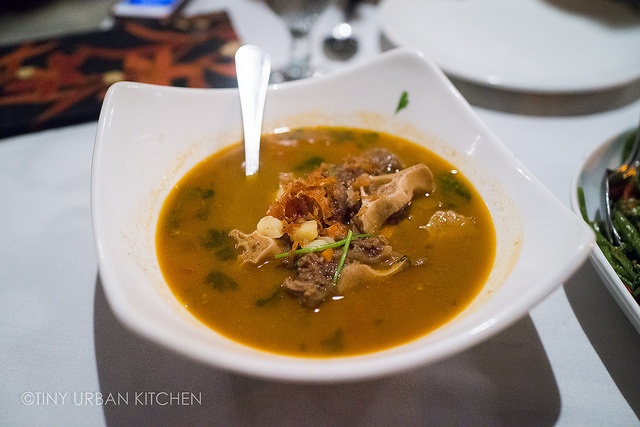
One of Bryan's favorite dishes was the Sup Ekor, an oxtail stew braised in an aromatic broth full of potatoes and Malaysian spices. It was hearty and satisfying. The oxtail was fall-off-the-bone tender and the overall flavors of the soup were perfectly balanced.
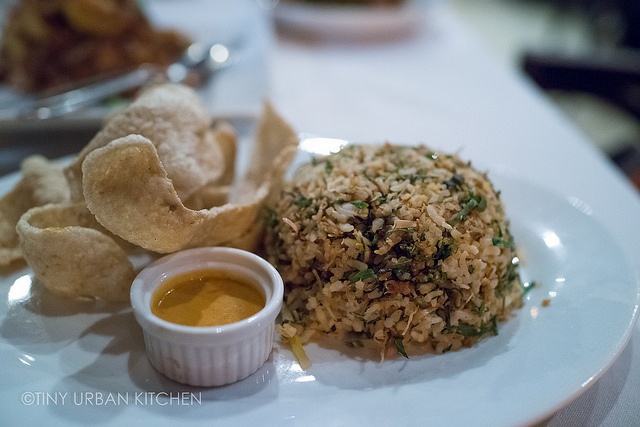
There are many different types of rice in Malaysian cuisine, and we were able to try several of the non-coconut milk varieties. Nasi Ulam (RM10 or $3 USD) is white rice tossed with dried shrimp, salted fish, anchovies, belacan, herbs and spices. It is a very herbaceous dish and could be an acquired taste if you're not used to the strong flavors of anchovies, fermented shrimp paste, and other Malaysian herbs. I enjoyed it, but it did feel a bit foreign to me as well.
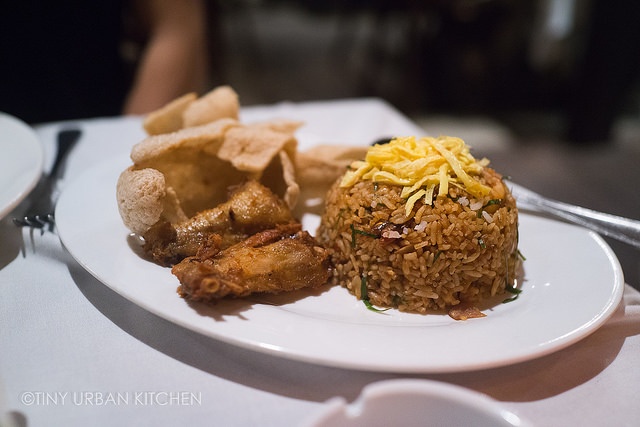
Nasi Goreng Kunyit (RM23 or ~ $7 USD) is fried rice made with prawns, sambal tumis and turmeric leaves. Sambal tumis a [articular type of sambal made from stir-frying together chili peppers with belacan shrimp paste, onions, garlic, and tamarind juice. This dish came with chicken satay and fish crackers, both of which were very good.
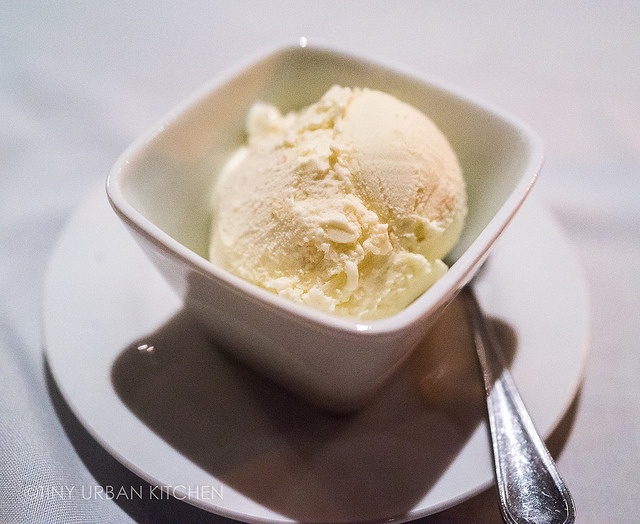 Because I was in Malaysia, I felt like I should have some sort of durian dessert. Although I was tempted by the Durian Chocolate Cake (which is one of their most famous desserts), I decided I was too full for something so heavy and opted for the simple homemade Durian Ice Cream (RM7 or $2.50 USD) instead. It was OK - the durian flavor was definitely there, though the quality of the ice cream was subpar to what I usually get in Boston (which is a high standard!).
Because I was in Malaysia, I felt like I should have some sort of durian dessert. Although I was tempted by the Durian Chocolate Cake (which is one of their most famous desserts), I decided I was too full for something so heavy and opted for the simple homemade Durian Ice Cream (RM7 or $2.50 USD) instead. It was OK - the durian flavor was definitely there, though the quality of the ice cream was subpar to what I usually get in Boston (which is a high standard!).
General Thoughts
All in all, we really enjoyed our meal. The service was excellent, the space was really nice, and the food was very good. The restaurant is very foreigner-friendly (I think it shows up in a lot of guidebooks and English language websites), and thus is filled with quite a bit of tourists.
Despite the fact that this would usually bother me, I was actually OK with this. Being "touristy" or popular with foreigners doesn't necessary mean bad food. One thing we learned while we were in Malaysia is that Malaysians love to cook and most of them eat at home a lot. It's not surprising that you don't see that many of them at a restaurant like Bijan, which serves a lot of home cooking type dishes on western-style dishware. Furthermore, the prices at Bijan are still higher than open air restaurants or streetside stalls. Most local Malays would probably opt to go somewhere without the fancy atmosphere.
From my perspective, the overall prices at Bijan were still very, very reasonable compared to most fancy restaurants in other countries. I didn't mind at all paying a bit more for something in a much nicer atmosphere. It's definitely a nice alternative and can still be easily mixed into a week that also includes lots of street side vendors and open air restaurants.
Bijan Restaurant
No 3 Jalan Ceylon 50200
Kuala Lumpur Malaysia
Tel + 603 2031 3575
Open Mondays to Sundays, 4:30 - 11pm
All Rights Reserved








